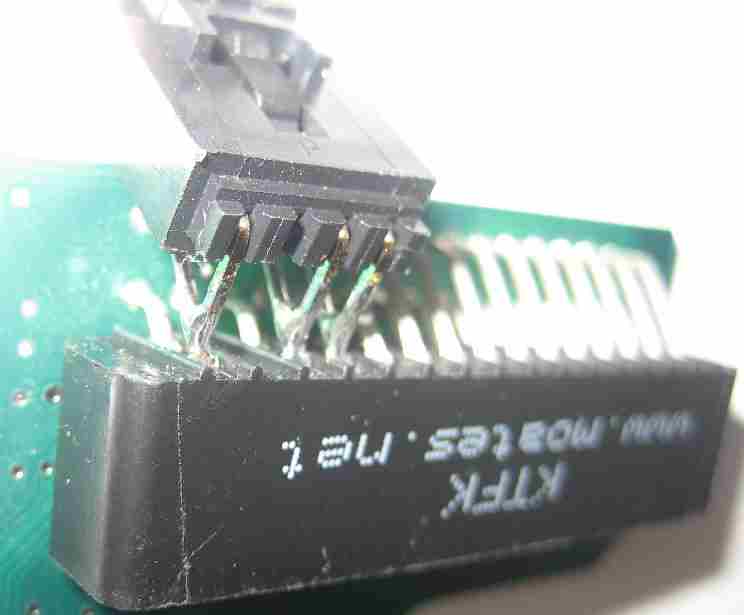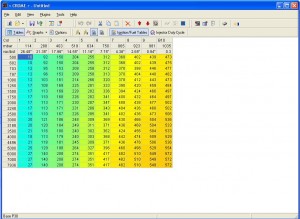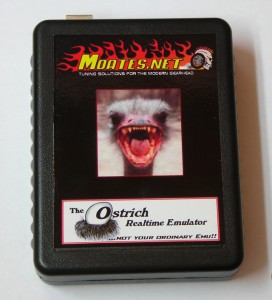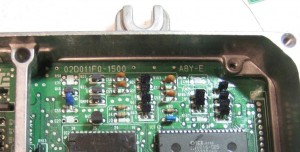Crome works some of the time, but unless you’re a developer and want to go and fix the numerous small problems it has, you won’t get much help.
If you are looking for something free to make basic changes to your car, Crome or Uberdata is probably worth trying. You can download versions of both software for free.
The OBD0 packages (BRE, TurboEdit) are fine for “simple” setups (figure stock map sensor, 450cc injectors, redline at stock or lower, etc.) but when you start pushing things further from stock their immaturity starts to show.
The information in this section represents the opinions of Dave Blundell as of 7/2/12. As you learn more, you might come to disagree with some of what is posted here and that is fine – these are just recommendations for beginners based on years of working with all the packages listed.
Additional Information
PGMFI.org will have lots of answers for you and probably make your head want to explode if you spend too much time there. Both the forum and wiki are loaded full of useful information, but the forum in particular can be very hard to find things. Use the search function lots.
OBD1 Civic/Integra ECUs are a common hardware platform. Despite the many different models of ECU (P05, P06, P28, P30, P72, etc.) Honda only used 3 different circuit boards in the US. This means that it is very easy to use an ECU designed to run one engine to run another. JDM ECUs use different parts for chipping and modification than US ECUs. Most JDM ECUs use primarily surface mount components while USDM and European ECUs use primarily through-hole components.
Moates Hardware for Honda ECUs
Demon+Neptune – Demon hardware with a Neptune RPT license included. Arguably the best solution available for tuning OBD1 Hondas. Realtime tuning, datalogging, onboard logging based on trigger conditions without a laptop connected, great software. Ideal bundle for enthusiasts looking to tune their own vehicle.
D2 Socket – standard 28 pin socket. Used for chipping pretty much all ECUs covered on this page. Part of other kits, too. Only thing needed for chipping OBD0 ECUs. Included as part of the Honda Chipping Kit.
S4 Aries Low Profile ZIF Socket – low-profile (smaller) ZIF (Zero Insertion Force) socket commonly used to make it easier to take chips in and out of an ECU quickly. Not essential by any means, but certainly nice. Included as part of the Honda Chipping Kit.
C2 SST 27SF512 Chip – This is *the* chip you will use if you are working with Hondas, unless you know better. Buy this if you want spare chips. Included as part of the Honda Chipping Kit.
’373 latch – 74HC373 octal latch. Required for OBD1 ECUs to talk to an external EPROM. Included as part of the Honda Chipping Kit.
C14 Cap – 220uF Electrolytic capacitor. Replaces a capacitor that is part of the power supply for the ECU. This capacitor is known to leak and go bad, blowing a hole that usually causes other damage in your ECU. Included as part of the Honda Chipping Kit.
CN2 latching header – this is used for datalogging. designed to latch and lock with the cable we supply with the Hondalog/HULOG. Normally included as part of the Honda Chipping Kit.
CN2 Straight header – this is used for datalogging. does not latch/lock the cable we supply. Basic, no frills.
Honda Chipping Kit – This kit includes everything you need to chip ONE OBD1 Honda ECU. Includes regular machine pin socket, low profile ZIF socket, 373 latch, caps, resistor, locking CN2 header and one chip. You must specify if you are using a USDM or JDM ECU! This is very important!
Install Service – don’t feel up to installing a Honda Chip Kit? Let us do it
Chip Extender – This device allows you to mount your chip away from the ECU. Usually works with Ostrich, switchers and other gizmos.
Two Timer – Allows you to program two independent programs into a 27SF512 chip and switch between them arbitrarily. Basic setup for multiple programs.
GX switcher – requires the Ex switcher. Allows selection from up to 16 programs programmed into a 29F040 chip. Advanced setup for multiple programs.
If you have a NON-VTEC ECU (PR4 | P05 | P06 | P75) and you wish to run a VTEC motor, please purchase the appropriate VTEC Upgrade kit for your ECU under the chip kit section. Each circuit board is labelled with a part number in white silkscreen lettering towards the top-center section of the board. Match this up with each of the three kits we sell. 1720 11F0 1980
PWM Boost control kit – Allows an ECU using eCtune / Neptune / Hondata to act as an PulseWidth Modulated (PWM) boost controller. Will not work with Crome or OBD0 solutions at this time. (alternative method for eCtune ONLY uses 5151 and sometimes an 810 Ohm resistor)
BURN2 – The BURN2 replaces the BURN1 and is functionally identical. The BURN2 burner is the weapon of choice for all things Honda that we support. You will use it to program chips
Ostrich 2.0 – The Ostrich2 allows flawless real-time changes to be made while the vehicle is running.
Hondalog / Xtreme HULOG – The Xtreme HULOG is a Hondalog in a durable plastic case for $5 more. They are functionally identical. They allow datalogging from ECUs that have an appropriate program and a CN2 header installed
Honda Tuning Package – This is the Xtreme HULOG, Ostrich 2.0, Burn2 and a Honda Chip Kit bundled together for savings. It includes all the hardware you need to get started. Same great stuff, cheaper price as a package. Simply buy additional Honda Chip Kits to tune additional vehicles.

























